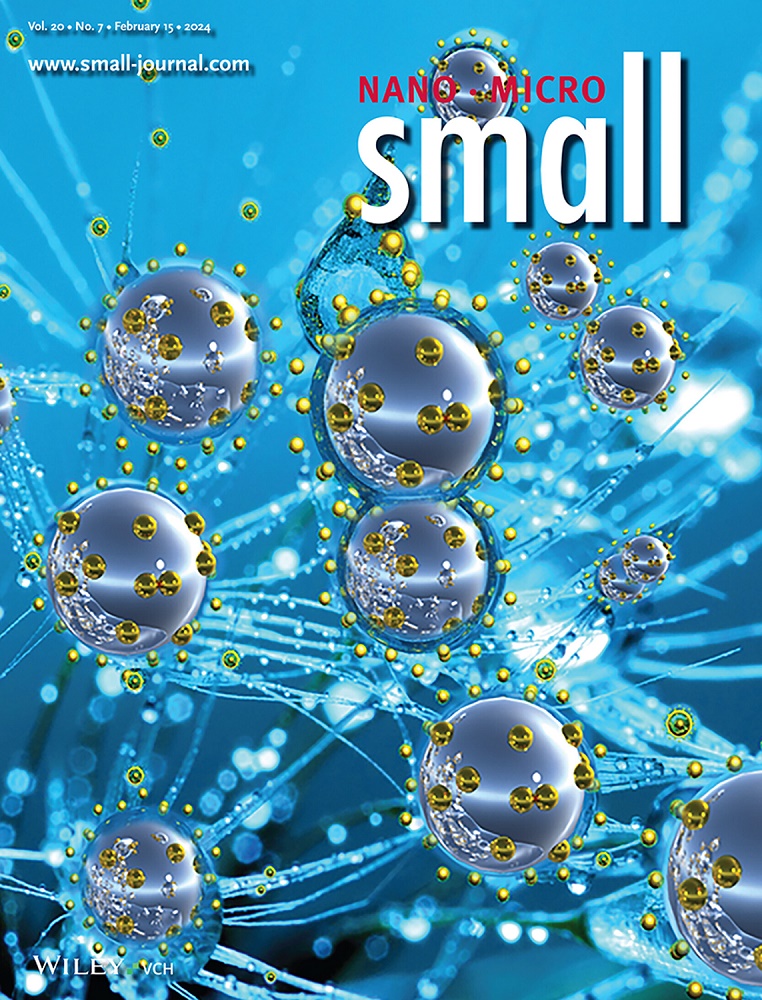用于多波段个人热伪装的彩色静电纺聚酰胺纳米纤维膜。
IF 12.1
2区 材料科学
Q1 CHEMISTRY, MULTIDISCIPLINARY
引用次数: 0
摘要
长期以来,个人热伪装的研究受到了有限的关注,并且在多波段兼容性方面仍然存在问题。在这里,通过一步染色静电纺丝工艺赋予聚酰胺66 (PA66)分子水平的颜色改性,从而在不牺牲其红外(IR)透明度的情况下,首次获得可见(VIS)彩色PA66非织造布。该掺杂染色PA66纳米纤维膜通过系统调整其结构参数,可以同时定制VIS色度和IR发射率,从而扩大其在各种伪装场景中的适用性。不同红外透射率的彩色PA66纤维组件的集合被静电纺丝用于基材辅助的静态或自适应伪装,vis彩色而红外选择性散热(大约2-3.5°C的冷却效果),以及面对非均匀背景的空间分段发射模式。dope染色静电纺PA66提供了平衡多方面挑战的潜力,包括VIS-IR兼容性,热生理舒适性,以及通过随机交错纳米纤维之间的微/纳米孔保持的透气性。本文章由计算机程序翻译,如有差异,请以英文原文为准。
Dope-Dyed Colorful Electrospun Polyamide Nanofibrous Membrane for Multiband Personal Thermal Camouflage.
For extended period, research in personal thermal camouflage (PTM) has received limited attention and still struggle with multiband compatibility. Here, molecular-level color modification is imparted to polyamide 66 (PA66) via a one-step dope-dyeing electrospinning process, resulting in the first instance of visible (VIS) colored PA66 nonwovens without sacrificing their infrared (IR) transparency. The dope-dyed PA66 nanofibrous membrane enables simultaneous customization of VIS chromaticity and IR emissivity through the systematic tuning of its structural parameters, thereby expanding its applicability in diverse camouflage scenarios. A collection of colored PA66 fibrous assemblies with varying IR transmittance levels is electrospun for substrate-assisted static or adaptive camouflage, VIS-colored while IR-selective heat dissipation (circa 2-3.5 °C cooling effect), and spatially segmented emittance patterns facing inhomogeneous background. Dope-dyed electrospun PA66 offers the potential to counterbalance multifaceted challenges, involving VIS-IR compatibility, thermophysiological comfort, and retained permeability through the micro/nanopores between randomly staggered nanofibers.
求助全文
通过发布文献求助,成功后即可免费获取论文全文。
去求助
来源期刊

Small
工程技术-材料科学:综合
CiteScore
17.70
自引率
3.80%
发文量
1830
审稿时长
2.1 months
期刊介绍:
Small serves as an exceptional platform for both experimental and theoretical studies in fundamental and applied interdisciplinary research at the nano- and microscale. The journal offers a compelling mix of peer-reviewed Research Articles, Reviews, Perspectives, and Comments.
With a remarkable 2022 Journal Impact Factor of 13.3 (Journal Citation Reports from Clarivate Analytics, 2023), Small remains among the top multidisciplinary journals, covering a wide range of topics at the interface of materials science, chemistry, physics, engineering, medicine, and biology.
Small's readership includes biochemists, biologists, biomedical scientists, chemists, engineers, information technologists, materials scientists, physicists, and theoreticians alike.
 求助内容:
求助内容: 应助结果提醒方式:
应助结果提醒方式:


